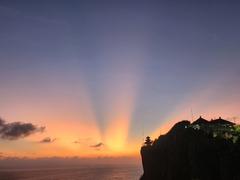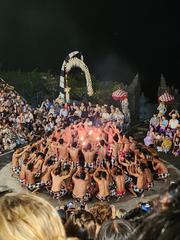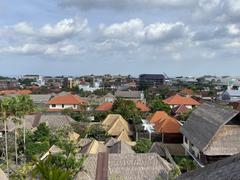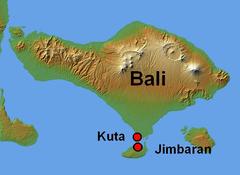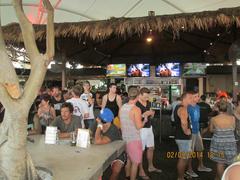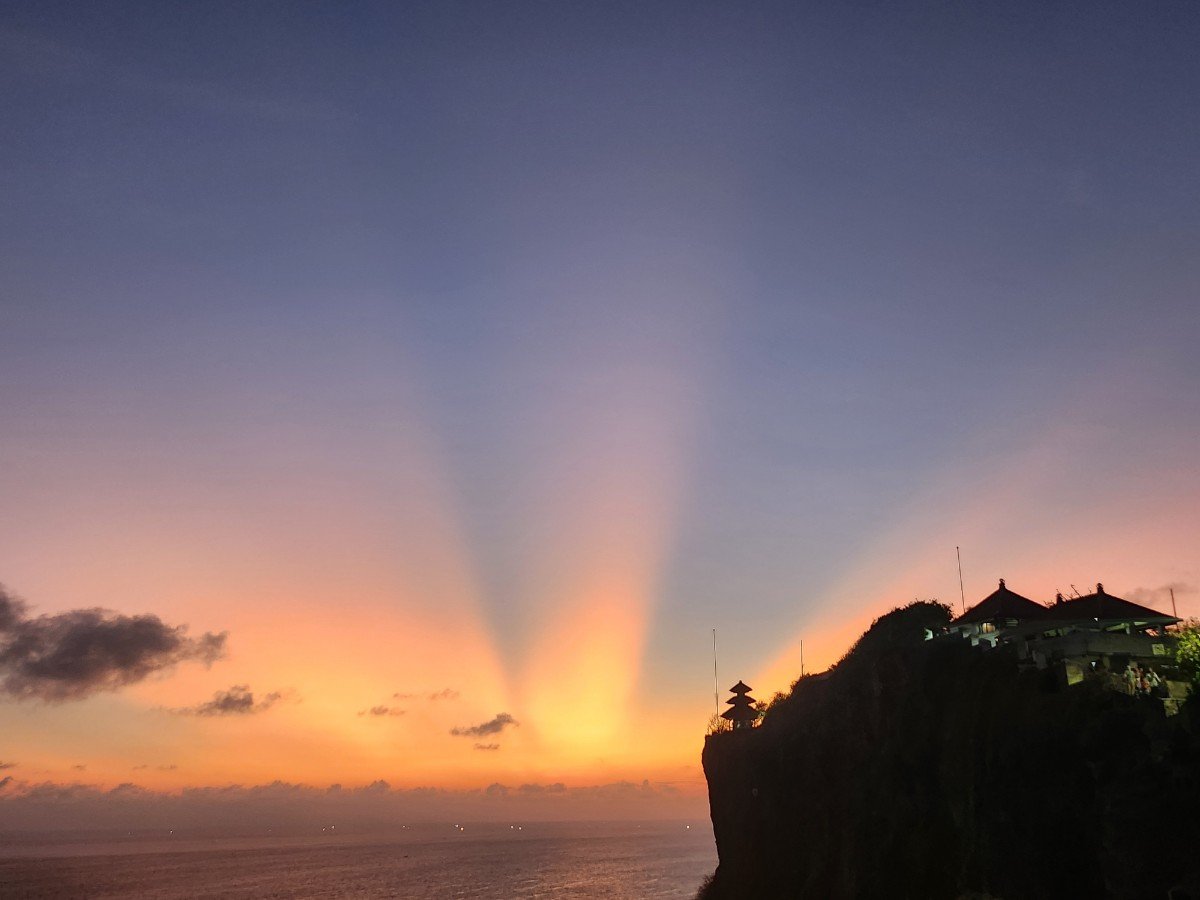
Visiting Seminyak, Badung, Indonesia: Complete Guide to Attractions, Visiting Hours, Tickets, and Historical Sites
Date: 15/06/2025
Introduction
Seminyak, located on Bali’s southwestern coast in Badung Regency, has transformed from a peaceful fishing and agricultural village into one of Indonesia’s most sought-after destinations. With its pristine beaches, vibrant culinary and nightlife scenes, upscale resorts, and rich spiritual heritage, Seminyak seamlessly blends modern luxury with enduring Balinese traditions. The area’s cultural heart is symbolized by Petitenget Temple—a centuries-old sanctuary that remains a focal point for the community’s spiritual life. Unlike its neighbor Kuta, Seminyak maintained a sense of exclusivity and tranquility well into the 20th century, making it a haven for travelers seeking both relaxation and cultural immersion (baliseminyak.com, finnsbeachclub.com, wikipedia.org).
This guide delivers essential visitor information—covering historical context, cultural significance, practical tips for visiting temples and attractions, and the best ways to experience Seminyak’s unique fusion of tradition and modernity. Whether you’re seeking spiritual enrichment, beach leisure, or cosmopolitan adventure, Seminyak promises an unforgettable Bali experience (overyourplace.com, singaporetripguide.com, finnsbeachclub.com).
Table of Contents
- Early Origins: From Fishing Village to Agricultural Heartland
- Seminyak’s Tourism Boom and Urban Development
- Cultural Significance and Spiritual Traditions
- Practical Visitor Information: Visiting Hours, Tickets, Accessibility
- Top Attractions and Modern Experiences
- Travel Tips and Nearby Sites
- Accessibility, Safety, and Etiquette
- Frequently Asked Questions (FAQ)
- Conclusion and Recommendations
- References
1. Early Origins: From Fishing Village to Agricultural Heartland
Seminyak’s history began as a humble fishing village, where locals relied on the bounty of the Indian Ocean and cultivated rice paddies and coconut groves inland (baliseminyak.com). The village’s layout was shaped by traditional Balinese compounds and temples, reinforcing a lifestyle deeply connected to Hindu rituals and community gatherings. Petitenget Temple, the area’s most significant spiritual site, stands as a testament to these longstanding traditions (finnsbeachclub.com).
2. Seminyak’s Tourism Boom and Urban Development
While Kuta attracted early waves of tourism in the 1970s, Seminyak remained relatively untouched for decades (balipedia.com). Its serene ambiance eventually drew travelers seeking peace and exclusivity. The 1990s and 2000s saw rapid transformation, with luxury villas, boutique hotels, and high-end restaurants reshaping the landscape (wikipedia.org). Jalan Raya Seminyak evolved into a bustling artery for shopping and dining, establishing the district’s cosmopolitan reputation.
3. Cultural Significance and Spiritual Traditions
Despite modernization, Seminyak’s spiritual essence endures. Petitenget Temple remains integral to local rituals and hosts the piodalan anniversary every 210 days (finnsbeachclub.com). Daily offerings, festival processions, and community prayers animate the temple’s grounds, providing visitors a rare glimpse into authentic Balinese Hindu practice (baliseminyak.com). The philosophy of tri hita karana—harmony between people, nature, and the divine—shapes Seminyak’s atmosphere and architecture (overyourplace.com).
Temples serve as living landmarks, hosting ceremonies involving gamelan music, traditional dance, and elaborate offerings. Major festivals such as Nyepi, Galungan, and temple anniversaries bring the community together in vibrant celebrations (singaporetripguide.com).
4. Practical Visitor Information: Visiting Hours, Tickets, Accessibility
Petitenget Temple
- Visiting Hours: 7:00 AM – 6:00 PM daily
- Tickets: No fixed entrance fee; donations are appreciated
- Guided Tours: Available via hotels or local operators
- Accessibility: Outer grounds are wheelchair accessible; interior areas may have steps and uneven surfaces
- Dress Code: Modest attire required; sarongs and sashes available at entrance
Seminyak Beach
- Hours: Open 24 hours
- Entry: Free
- Amenities: Daybeds (from 50,000 IDR), beachside massages, beach clubs open 10:00 AM – 10:00 PM
- Accessibility: Paved walkways, some areas offer wheelchair access
Jalan Raya Seminyak
- Best Times: Daytime for shopping; evening for dining and nightlife
- Shops: Typically open 10:00 AM – 10:00 PM
5. Top Attractions and Modern Experiences
Beaches
- Seminyak Beach: Golden sands, gentle surf, vibrant sunsets (Salt in Our Hair)
- Petitenget Beach: Quieter, adjacent to Petitenget Temple (Singapore Trip Guide)
- Double Six Beach: Relaxed vibe, popular for sunset cocktails
Iconic Beach Clubs
- Potato Head Beach Club: 9:00 AM – midnight; infinity pool, events, wheelchair accessible (TravelSetu)
- Ku De Ta: 11:00 AM – midnight; beachfront dining, regular events
- Finns Beach Club: 9:00 AM – 10:00 PM; family-friendly, pools, bars (Finns Beach Club)
Dining
Seminyak offers everything from warungs and trendy cafes to fine dining:
- Mamasan: Modern Asian (12:00 PM – 11:00 PM)
- Sangsaka: Indonesian tasting menus
- La Lucciola: Beachfront Italian, sunset views (Gowanderly)
Shopping
- Seminyak Village Mall: 10:00 AM – 10:00 PM
- Seminyak Flea Market: 9:00 AM – 9:00 PM (Bali Holiday Secrets)
Nightlife
- La Favela: Nightclub (7:00 PM – 3:00 AM)
- Motel Mexicola: Themed parties, tequila, live music
Wellness
- Bodyworks Spa: 10:00 AM – 10:00 PM
- Prana Spa: 10:00 AM – 10:00 PM (Indonesia Impression Tour)
Arts & Culture
- Petitenget Temple: 7:00 AM – 6:00 PM, donations welcome (Singapore Trip Guide)
- Nyaman Gallery, Biasa ArtSpace: 10:00 AM – 6:00 PM (TravelSetu)
Outdoor Activities
- Surfing: Lessons from 350,000 IDR, 7:00 AM – 6:00 PM (Salt in Our Hair)
- Day Trips: Ubud, Nusa Penida, waterfalls (Bali Holiday Secrets)
6. Travel Tips and Nearby Sites
- Best Time to Visit: April – October (dry season); June recommended for fewer crowds (Bali Holiday Secrets)
- Nearby Sights: Tanah Lot Temple (sunsets), Uluwatu Temple (clifftop views), Canggu (surfing)
- Festivals: Nyepi (Day of Silence), Galungan, Kuningan (agoda.com)
7. Accessibility, Safety, and Etiquette
- Transport: Taxis (Blue Bird), Grab/Gojek, scooters (for experienced riders only, with International Driver’s Permit), car rentals
- Safety: Seminyak is safe, but beware of petty theft; stay vigilant at night and use reliable transport (Visa Indonesia)
- Health: Drink bottled water; medical clinics available; travel insurance recommended
- Etiquette: Dress modestly for temple visits (sarong/sash); avoid stepping on offerings; ask before taking photos at ceremonies (balistarisland.com)
- Shopping: Bargain politely at markets; fixed prices in boutiques (Travel Triangle)
- Responsible Tourism: Dispose of waste properly, respect local customs, and avoid illegal activities (Vacation Savant)
8. Frequently Asked Questions (FAQ)
Q: What are the visiting hours for Petitenget Temple?
A: 7:00 AM – 6:00 PM daily.
Q: Are Seminyak beaches free to access?
A: Yes, public beaches are free; some beach clubs may charge for amenities.
Q: Is Seminyak safe for solo travelers?
A: Yes, but avoid isolated areas after dark and use trusted transport.
Q: Do I need a ticket to visit temples?
A: No fixed ticket, but donations are appreciated.
Q: How can I get around Seminyak?
A: Taxis, ride-hailing apps, scooters (if licensed), and walking in central areas.
Q: What is the best time to visit?
A: April–October, especially June for pleasant weather and fewer crowds.
9. Conclusion and Recommendations
Seminyak’s transformation from a rural village to a cosmopolitan destination reflects Bali’s dynamic spirit. Its historic temples, vibrant festivals, golden beaches, and world-class amenities create a destination where tradition and modernity coexist. Visitors can immerse themselves in Balinese culture, savor global cuisine, and unwind at luxurious resorts—all within easy reach of historical sites like Tanah Lot and Uluwatu.
To maximize your trip:
- Respect local customs and dress codes at temples.
- Explore beyond the beaches—visit art galleries, markets, and participate in cultural events.
- Stay safe by using reputable transport and securing your valuables.
- Download the Audiala app for personalized itineraries and the latest updates on Seminyak’s attractions and events.
10. References
- Exploring Seminyak’s History and Culture, Bali Seminyak
- Petitenget Temple Guide, Finns Beach Club
- Seminyak, Wikipedia
- Seminyak Cultural Travel Guide, Over Your Place
- Cultural Exploration Around Seminyak Bali, Singapore Trip Guide
- Ultimate Guide to Seminyak Bali, Finns Beach Club
For more travel inspiration and up-to-date guides, visit the Bali Tourism Board or follow us on social media. Download the Audiala app for exclusive itineraries and travel tips!
